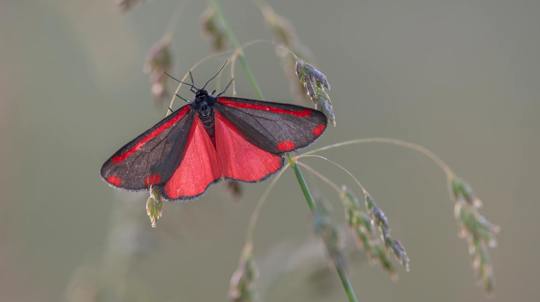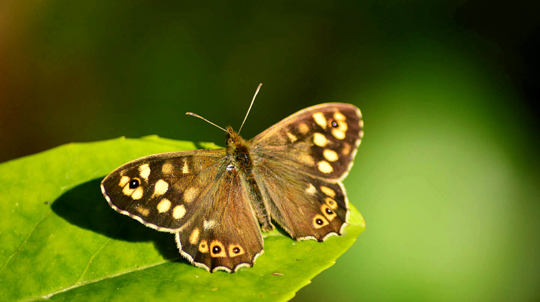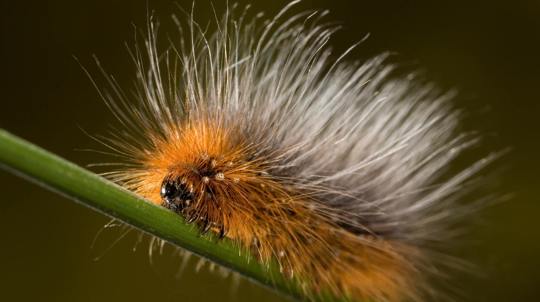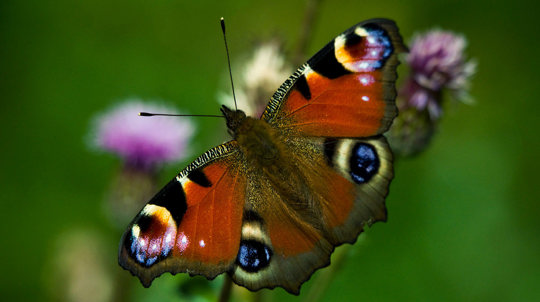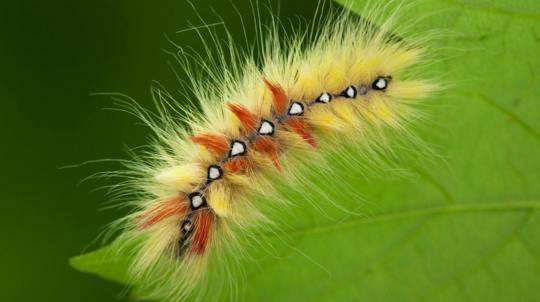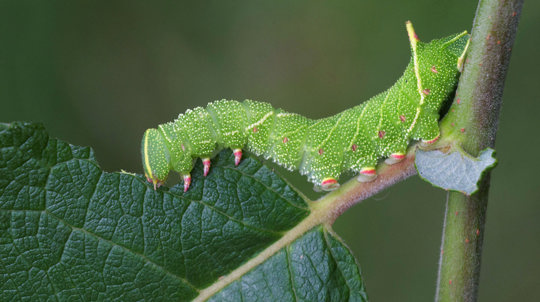- Use an ID guide to help you narrow down the likely family of moth your specimen belongs to before trying to identify to species level. Size and resting wing shape are the best clues. Are the wings tucked over one another? Do they lie flat? Is the moth wider than it is long?
- Colours can fade as moths become older and more damaged so pay close attention to the wing patterns.
- Try using a light trap to attract moths for closer study, or offer night-scented plants or sugary treats such as cut fruit to tempt in nectar feeders.
- Take part in a moth trapping event with a local naturalist group to really get your eye in.
UK moth identification and facts: 12 common species for beginners

Content manager
There are more than 870 species of large moth (known as macro moths) in the UK, many of which can be tricky for beginners to tell apart. But there are a few commonly-encountered species that are perfect for practising your ID skills on. Get to know some of the UK's most familiar and easily-identified moths with our quick guide.
1. Angle shades (Phlogophora meticulosa)
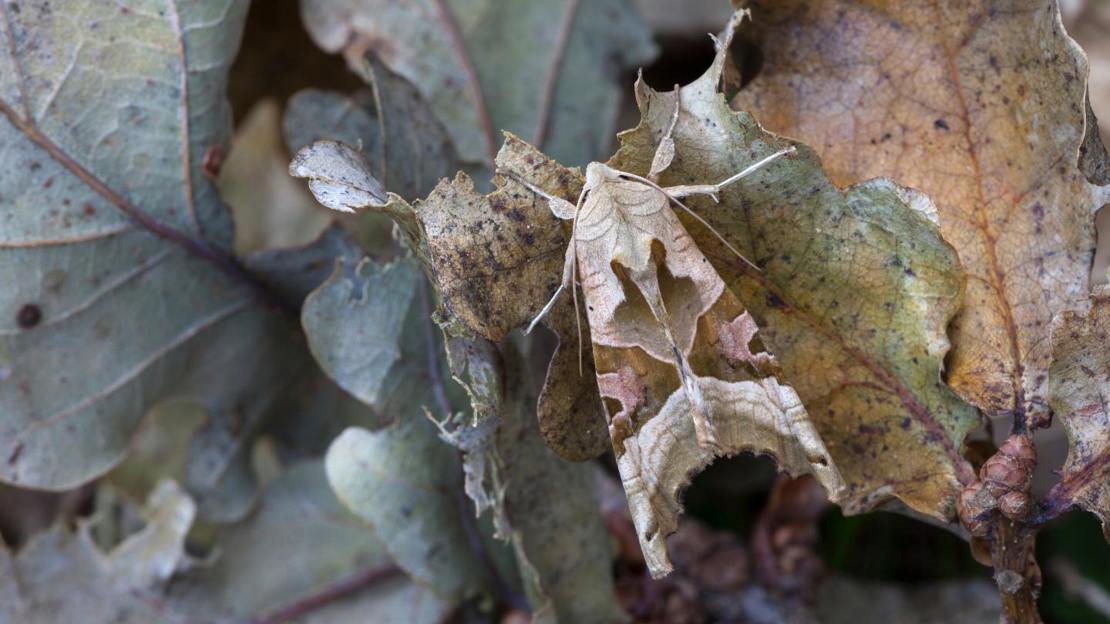
Research suggests that the UK and northern Europe may have its own resident species of angle shades which is distinct from another that migrates here from further south.
How to identify
Resembles a dried up leaf, complete with crinkly wing edges and muted colours. Look for the triangular patterning that cuts through the centre of each wing and the long, sleek shape with wings folded.
Size
Wingspan 42-50mm.
Where to find it
Common and widespread across the UK. Can be found in woodland, gardens and the wider countryside.
When to see it
On the wing from May - October.
Caterpillar foodplants
A variety of herbaceous plants including nettles, docks, bramble and ivy as well as trees such as birch, hazel and oak.
2. Herald (Scoliopteryx libatrix)
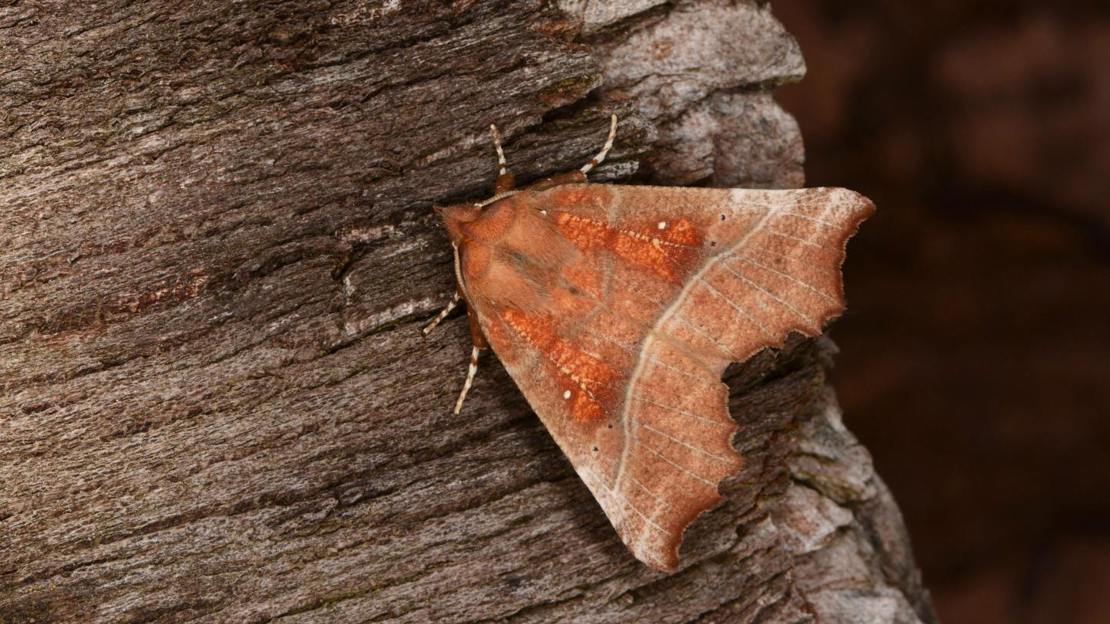
How to identify
Another master of disguise that blends in perfectly with fallen autumn leaves. Look for the warm orange-red areas in the centre of the forewings and the intricately scalloped wing edges. There is also a distinct pale line that runs across both wings.
Size
Wingspan 38-46mm.
Where to find it
Fairly common and found across the UK in a number of habitats, including gardens, parks and woodland. Sometimes encountered overwintering indoors or in dry sheds and outbuildings.
When to see it
On the wing from August - November.
Caterpillar foodplants
3. Peppered moth (Biston betularia)
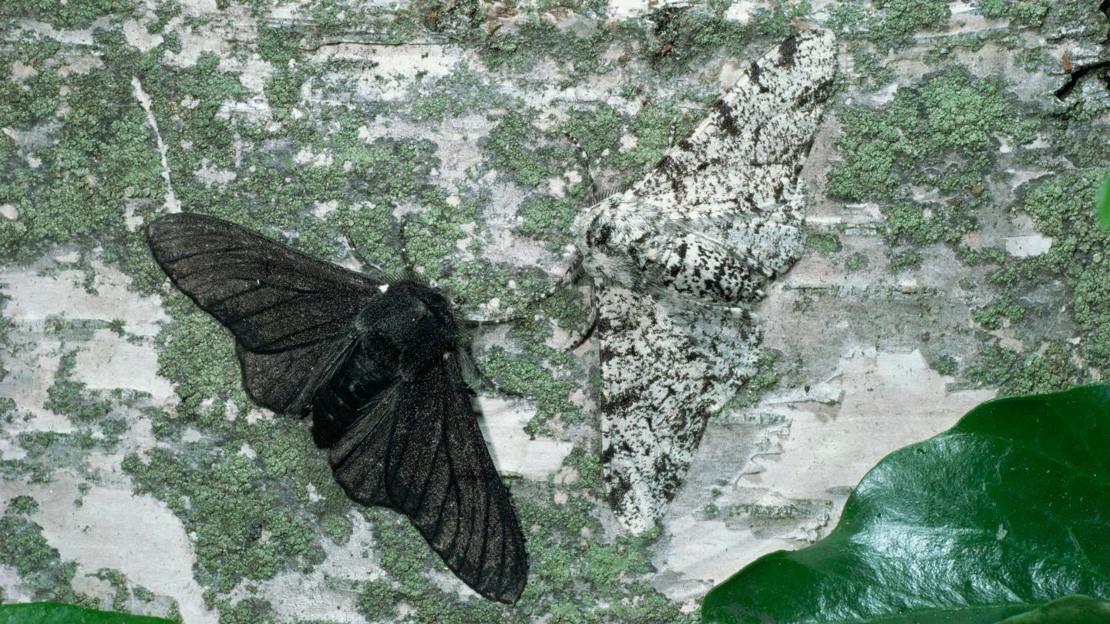
The dark form of this moth is thought to have become more common during the Industrial Revolution when it would have better blended in against soot-covered surfaces - the perfect example of natural selection in action.
How to identify
Unlike many other moths, this species rests with its wings spread and its abdomen exposed. It comes in two colour types: the 'normal' form is grey-white and peppered with dark speckles; the dark or melanic form is black all over.
Size
Wingspan 44-56mm.
Where to find it
Common and widespread across the UK. Can be found in urban areas as well as woodland, parks and gardens.
When to see it
On the wing from May - September.
Caterpillar foodplants
A number of deciduous trees and shrubs including beech, birch, hawthorn, blackthorn, oak, poplar, lime, sallows and bramble.
4. Old lady (Mormo maura)
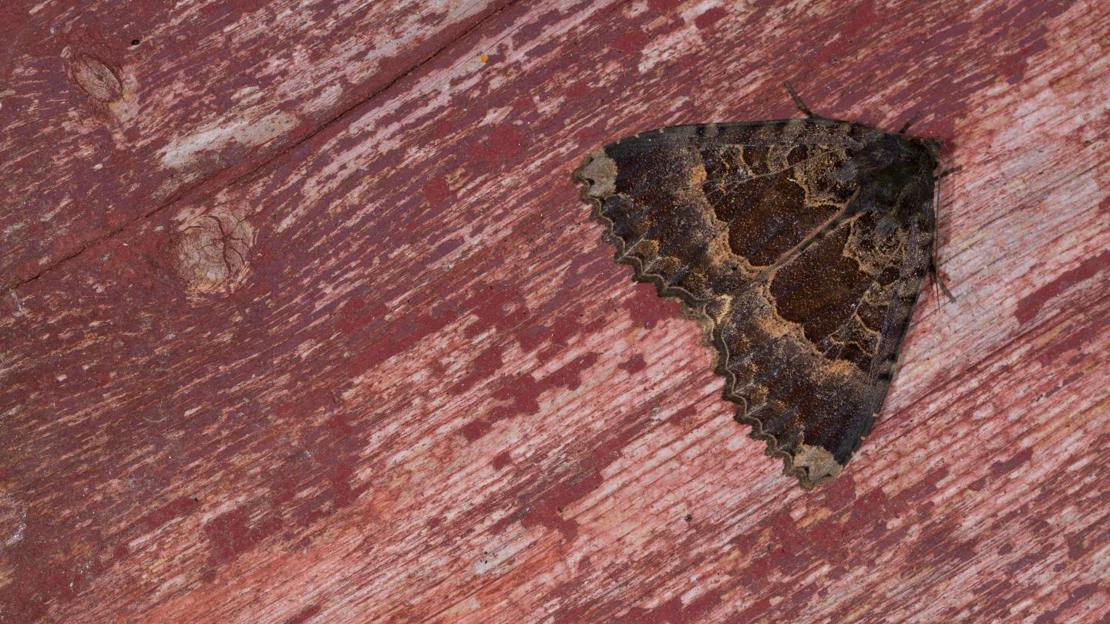
How to identify
This moth is so named because the wing patterning is said to resemble that of a woman's shawl. Look for its dark, sombre colouration and scalloped wing edges. Its large size is what really gives it away.
Size
Wingspan 55-65mm.
Where to find it
Found across many parts of the UK but less common in Scotland and Northern Ireland. Likes damp environments and a frequent visitor to gardens. Sometimes shelters in sheds and outbuildings during the day.
When to see it
On the wing from July - August.
Caterpillar foodplants
Mainly feeds on blackthorn but also on other trees and shrubs.
5. Magpie moth (Abraxas grossulariata)
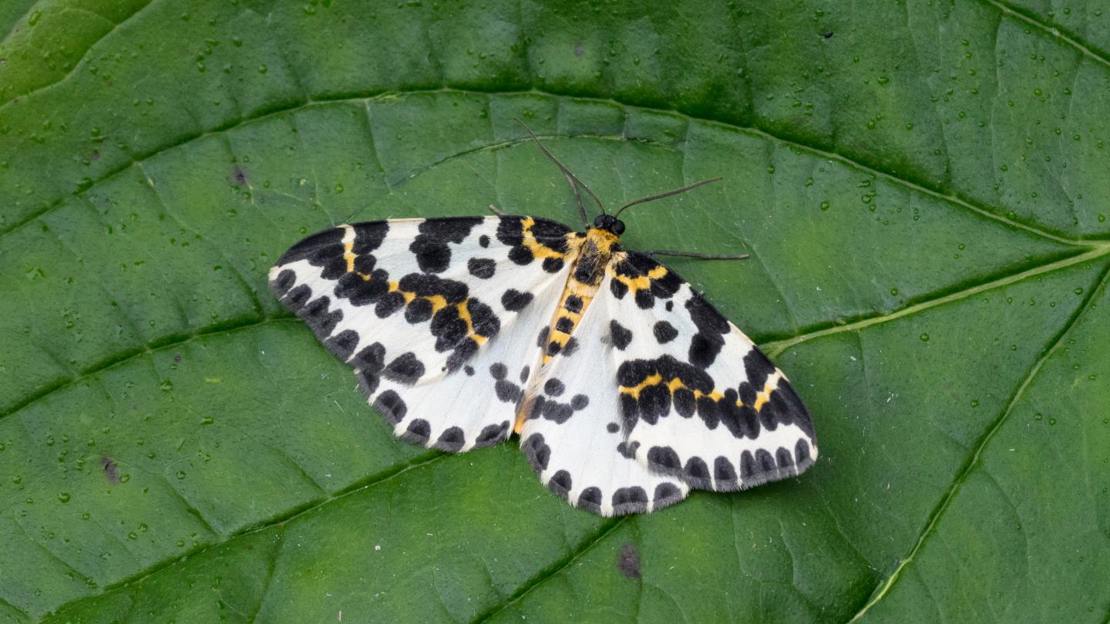
How to identify
An unmistakable and colourful moth that is frequently flushed from vegetation during the day. Look for the butterfly-like spread of white wings with black spots. It also has a yellow body and threads of yellow across the forewings.
Size
Wingspan 36-50mm.
Where to find it
Common and widespread across the UK. Readily found in gardens, woodland and hedgerows as well as moorland.
When to see it
On the wing from June - August.
Caterpillar foodplants
Feeds on a range of shrubs and plants including heather, gooseberry, currant, bramble, hawthorn, blackthorn and hazel.
6. Brimstone moth (Opisthograptis luteolata)
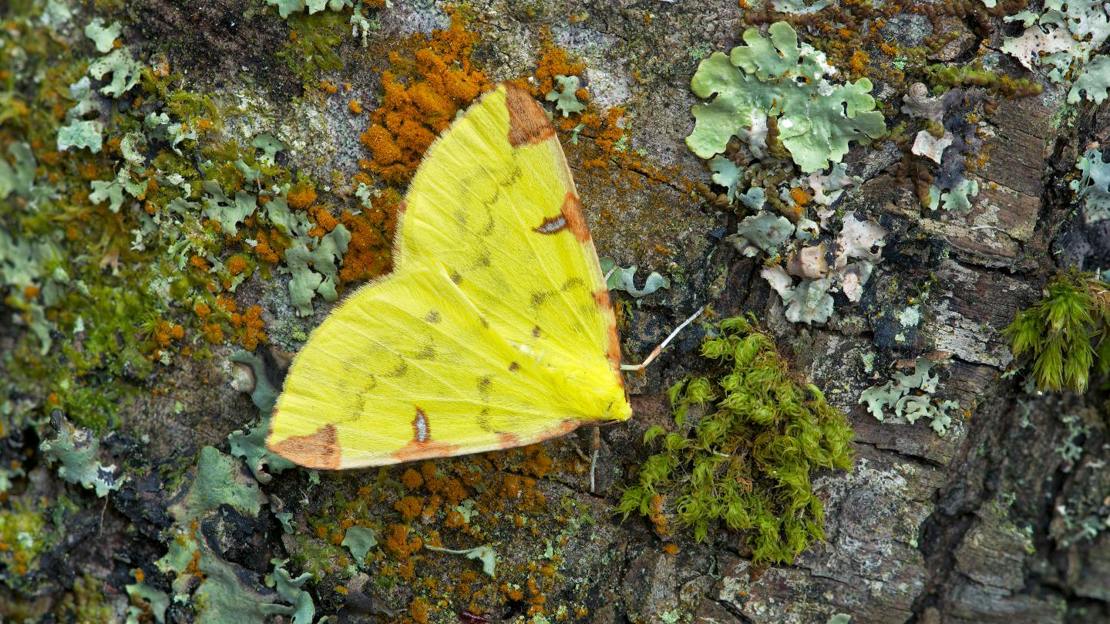
How to identify
Like its butterfly namesake, this moth is a bright canary yellow. Look for the brown markings on the leading edges of the forewings and the two silvery, crescent-shaped eye spots. Sometimes flushed from hedgerows during the day.
Size
Wingspan 28-42mm.
Where to find it
Common and widespread across the UK in woodland, hedgerows and gardens.
When to see it
On the wing from April - October.
Caterpillar foodplants
Trees and shrubs such as rowan, hawthorn and blackthorn.
Want to brush up on your ID skills?
Take a look at our range of wildlife swatch books for help with birds, butterflies and more.
Shop now7. Setaceous Hebrew character (Xestia c-nigrum)
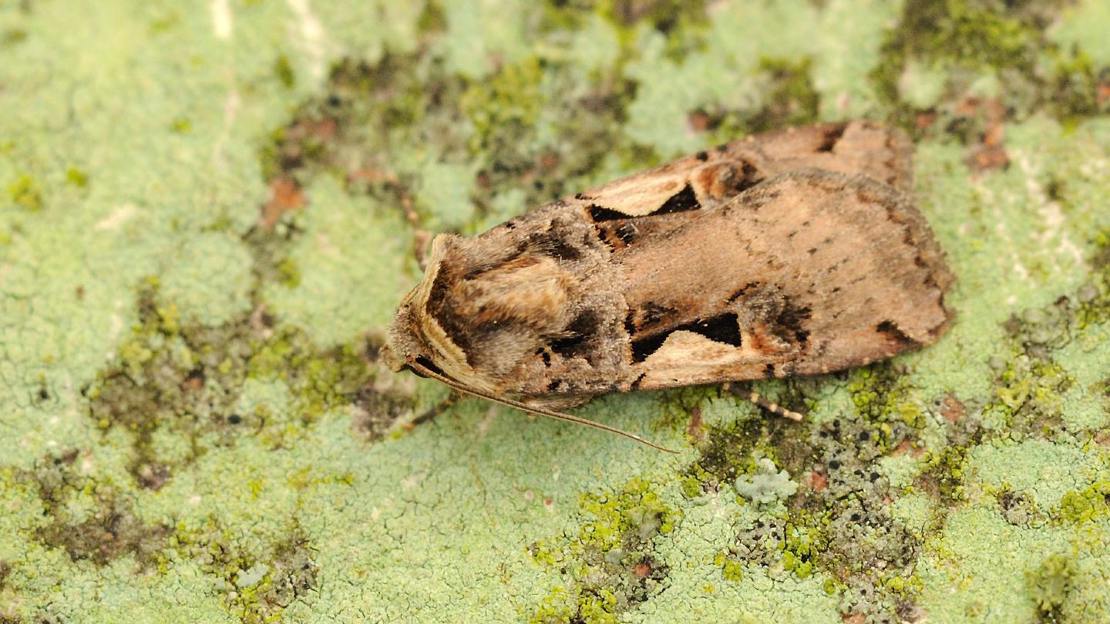
How to identify
While it may appear brown and drab at first glance, this moth has a unique identifying mark to help it stand out from the crowd. Look for the dark rectangles in the middle of each forewing which are bisected by a pale V-shape, said to resemble a character from the Hebrew alphabet.
Size
Wingspan 28-38mm.
Where to find it
Common and widespread across the UK, with numbers sometimes augmented by migrants. Found in gardens and woodland, and a reliable visitor to light traps.
When to see it
On the wing from May - October.
Caterpillar foodplants
Mainly nettles and dead-nettles but also other herbaceous plants including bedstraws.
8. Muslin moth (Diaphora mendica)
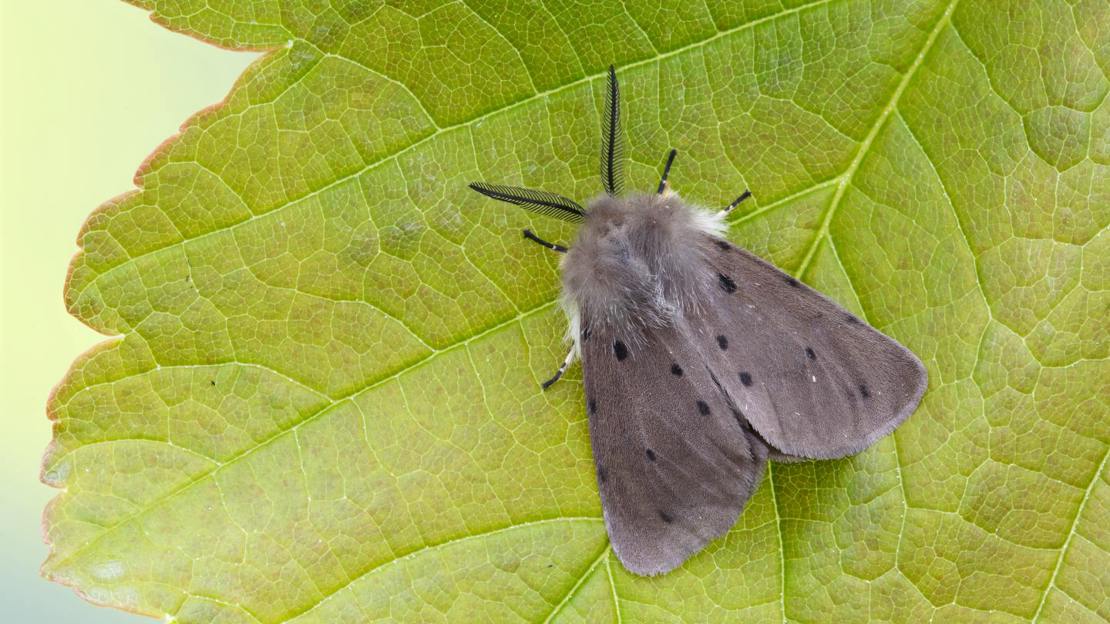
Male muslin moths fly by night, but the females are active during the day.
How to identify
Male muslin moths are powdery grey with black spots (and in Ireland are creamy brown), whereas females are white with black spots and can be confused with the white ermine moth (Spilosoma lubricipeda). Their patterning is said to resemble the ermine trims worn on the robes of the British peerage. Also look for their furry shoulders and attractive, feathery black antennae.
Size
Wingspan 28-38mm.
Where to find it
Common and widespread across England, Wales and Northern Ireland but scarce in Scotland. Found in gardens, hedgerows and open habitats.
When to see it
On the wing from May - June.
Caterpillar foodplants
Plants such as plantains, docks, dandelion, chickweed and heather.
9. Antler moth (Cerapteryx graminis)
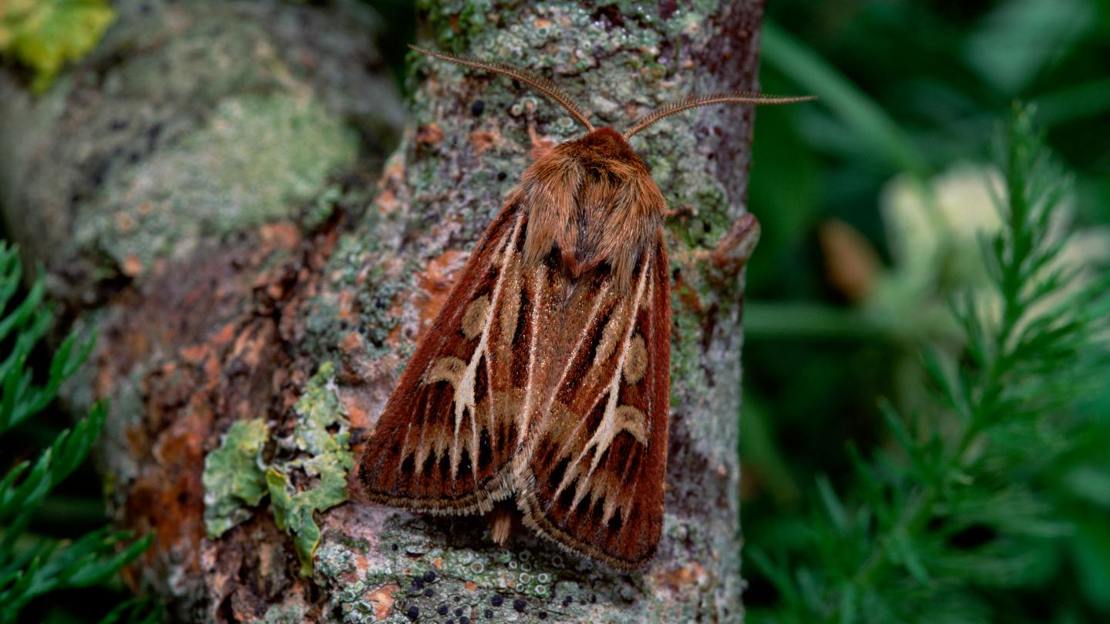
How to identify
A chestnut brown moth with a distinctive pale line down the centre of each forewing which branches into an antler-like shape. The male has feathery antennae and is smaller than the female. Can be encountered flying during the day.
Size
Wingspan 24-34mm.
Where to find it
Common and widespread across the UK. A grassland specialist often found on moorland, pasture and downland.
When to see it
On the wing from July - September.
Caterpillar foodplants
Various grasses and some sedges and rushes.
10. Blood-vein (Timandra comae)
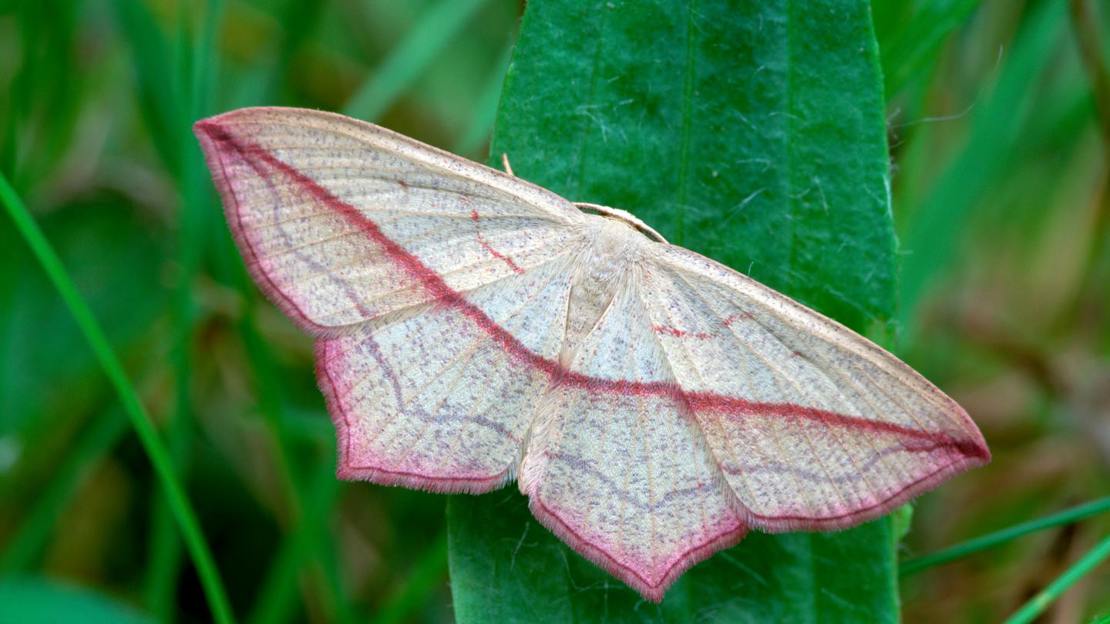
How to identify
A pretty little moth that lives up to its name. It rests with wings spread, showing off the pointed tips of the hindwings. All four wings are fringed with pink at the trailing edges and are cut across the middle with an almost straight pink-red line. Often spotted during the day among low vegetation.
Size
Wingspan 30-46mm.
Where to find it
Common and widespread across England and Wales but absent from Northern Ireland and much of Scotland. Prefers damp habitats such as water meadows, marshes and riversides but also found in hedgerows, gardens and woodland rides.
When to see it
On the wing from May - September.
Caterpillar foodplants
Docks, sorrel and other low growing plants.
11. Buff-tip (Phalera bucephala)
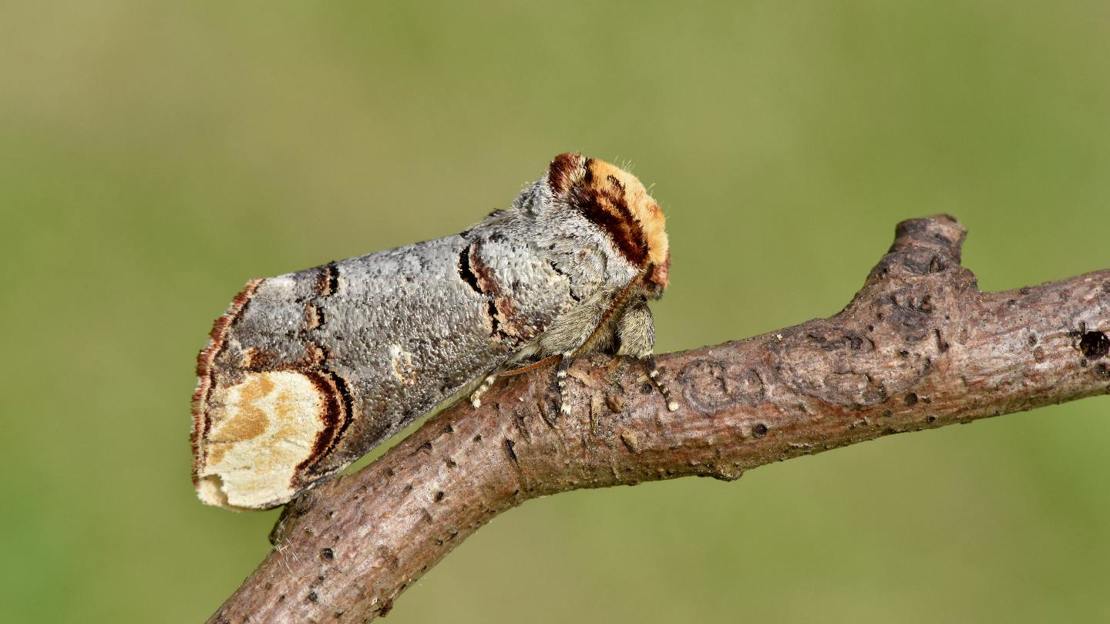
How to identify
This cleverly camouflaged moth is banking on being mistaken for the shorn off end of a birch twig. Look for the straw-coloured areas at the ends of the wings and otherwise silvery colouration, plus the buff 'shoulders' at the front of the thorax. The wings are held close to the body giving the moth a somewhat cylindrical shape.
Size
Wingspan 44-68mm.
Where to find it
Widespread and common across the UK. Found in woodland, hedgerows and gardens.
When to see it
On the wing from June - July.
Caterpillar foodplants
A variety of deciduous trees including birch, sallows, oak and hazel, but also hornbeam, rowan, sycamore, alder, lime, beech and elm.
12. Flame shoulder (Ochropleura plecta)
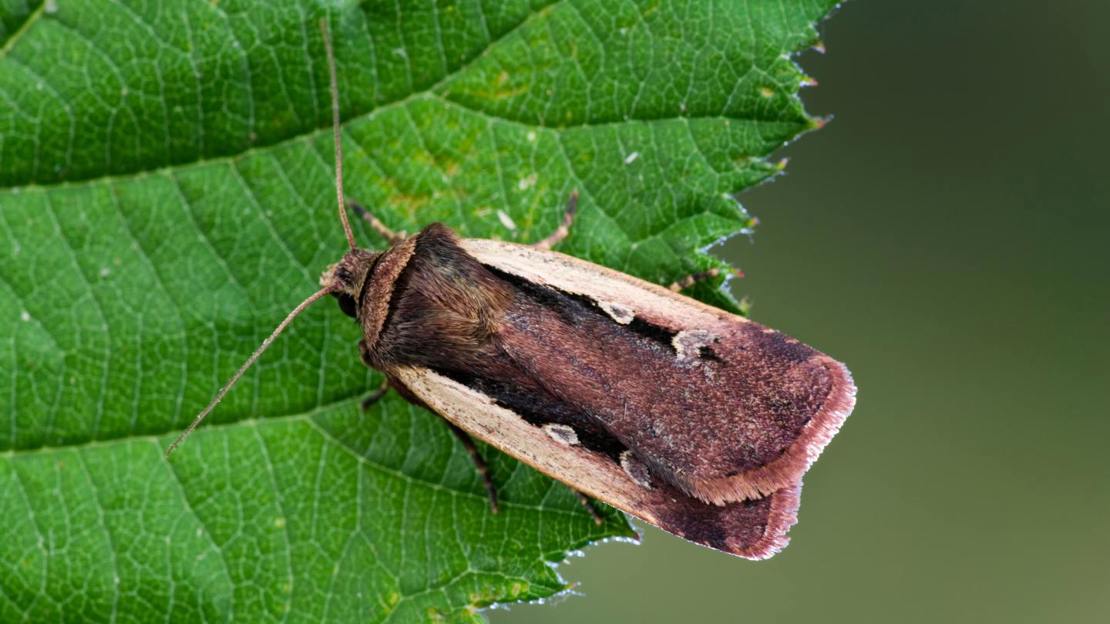
How to identify
An almost pinky-brown moth with distinctive creamy edges to the forewings - the 'flame shoulders' that give this moth its name. Look for the black border behind these pale areas and the two spots on either wing.
Size
Wingspan 25-30mm.
Where to find it
Common and widespread across the UK. Found in almost all habitats, including woodland and gardens.
When to see it
On the wing from May - September.
Caterpillar foodplants
Low-growing herbaceous plants such as plantains, docks and bedstraws.
Create a wildlife haven in your garden
Help support pretty pollinating insects like butterflies and moths with garden trees rich in nectar and leafy forage.
Buy treesLearn more about moths and butterflies
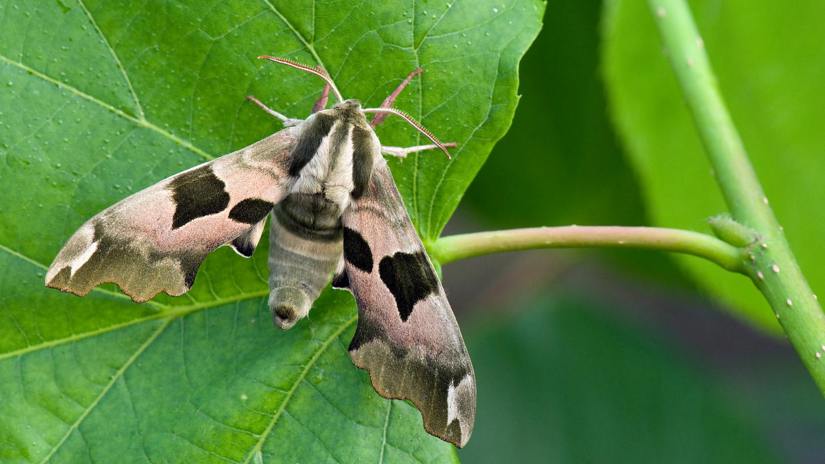
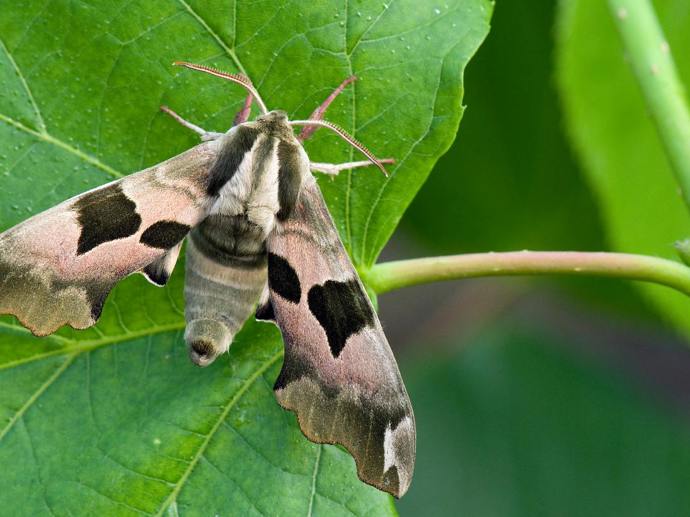
UK hawk-moth identification and facts
Amy Lewis • 21 Jun 2021
Hawk-moths are some of the largest and most recognisable moths in the UK. Learn to tell which is which with our visual guide to 10 of the most commonly encountered UK species.


